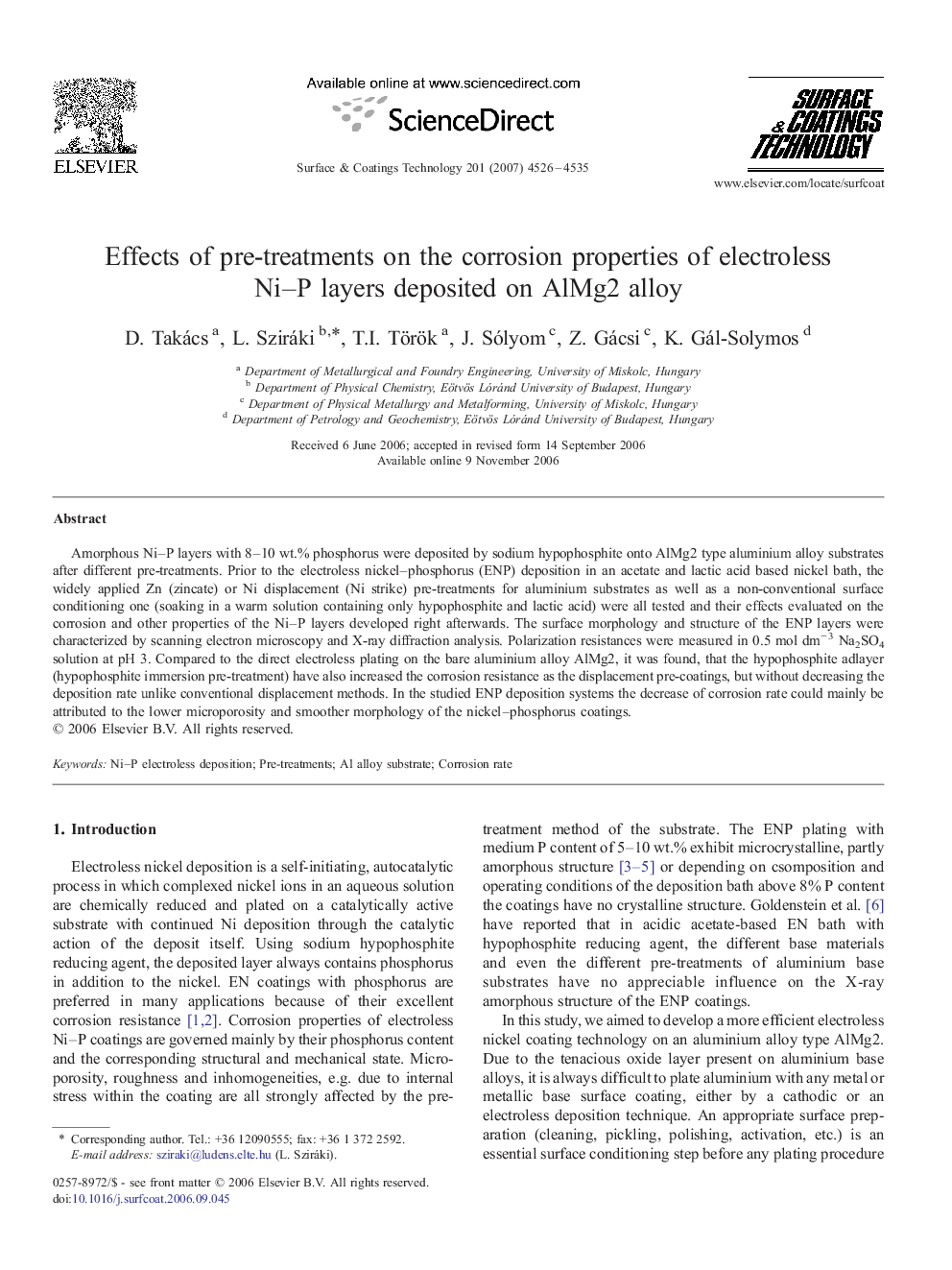| Article ID | Journal | Published Year | Pages | File Type |
|---|---|---|---|---|
| 1662595 | Surface and Coatings Technology | 2007 | 10 Pages |
Amorphous Ni–P layers with 8–10 wt.% phosphorus were deposited by sodium hypophosphite onto AlMg2 type aluminium alloy substrates after different pre-treatments. Prior to the electroless nickel–phosphorus (ENP) deposition in an acetate and lactic acid based nickel bath, the widely applied Zn (zincate) or Ni displacement (Ni strike) pre-treatments for aluminium substrates as well as a non-conventional surface conditioning one (soaking in a warm solution containing only hypophosphite and lactic acid) were all tested and their effects evaluated on the corrosion and other properties of the Ni–P layers developed right afterwards. The surface morphology and structure of the ENP layers were characterized by scanning electron microscopy and X-ray diffraction analysis. Polarization resistances were measured in 0.5 mol dm− 3 Na2SO4 solution at pH 3. Compared to the direct electroless plating on the bare aluminium alloy AlMg2, it was found, that the hypophosphite adlayer (hypophosphite immersion pre-treatment) have also increased the corrosion resistance as the displacement pre-coatings, but without decreasing the deposition rate unlike conventional displacement methods. In the studied ENP deposition systems the decrease of corrosion rate could mainly be attributed to the lower microporosity and smoother morphology of the nickel–phosphorus coatings.
